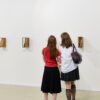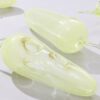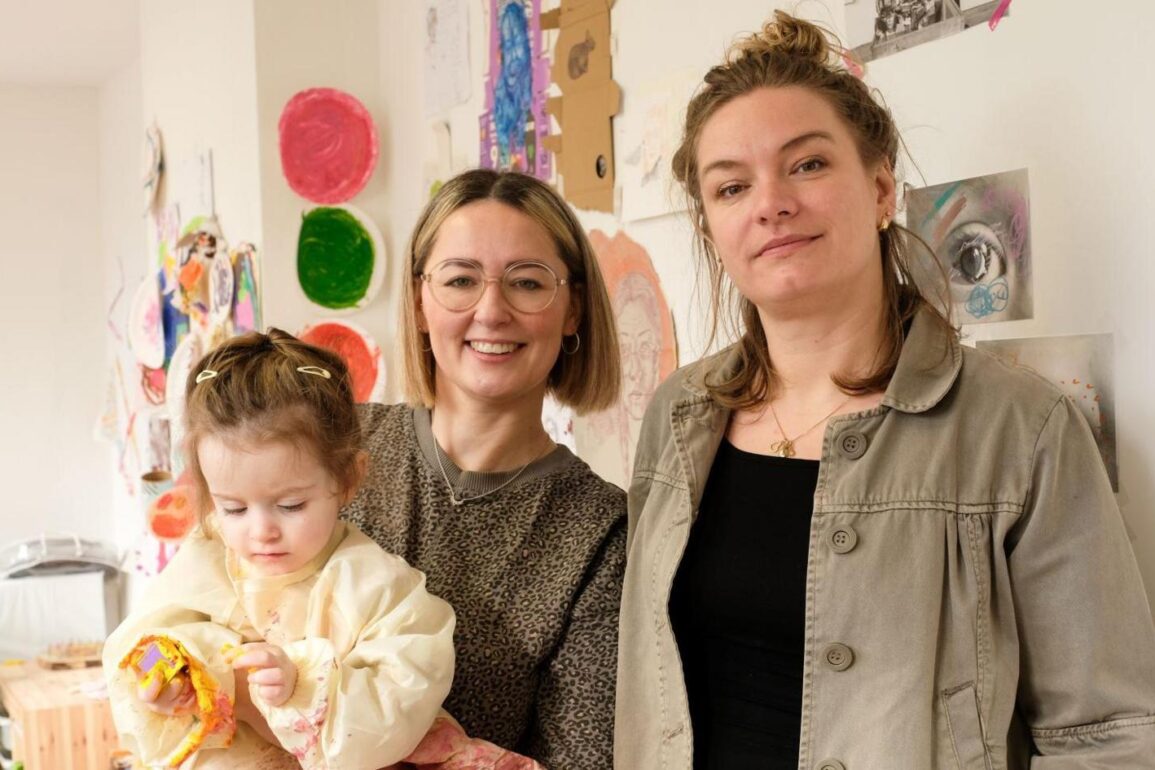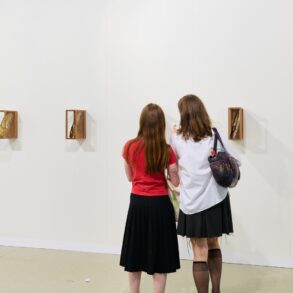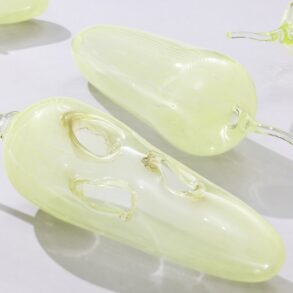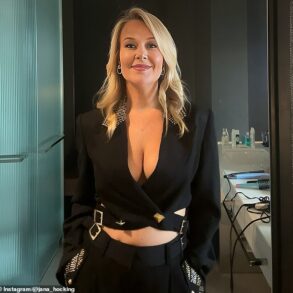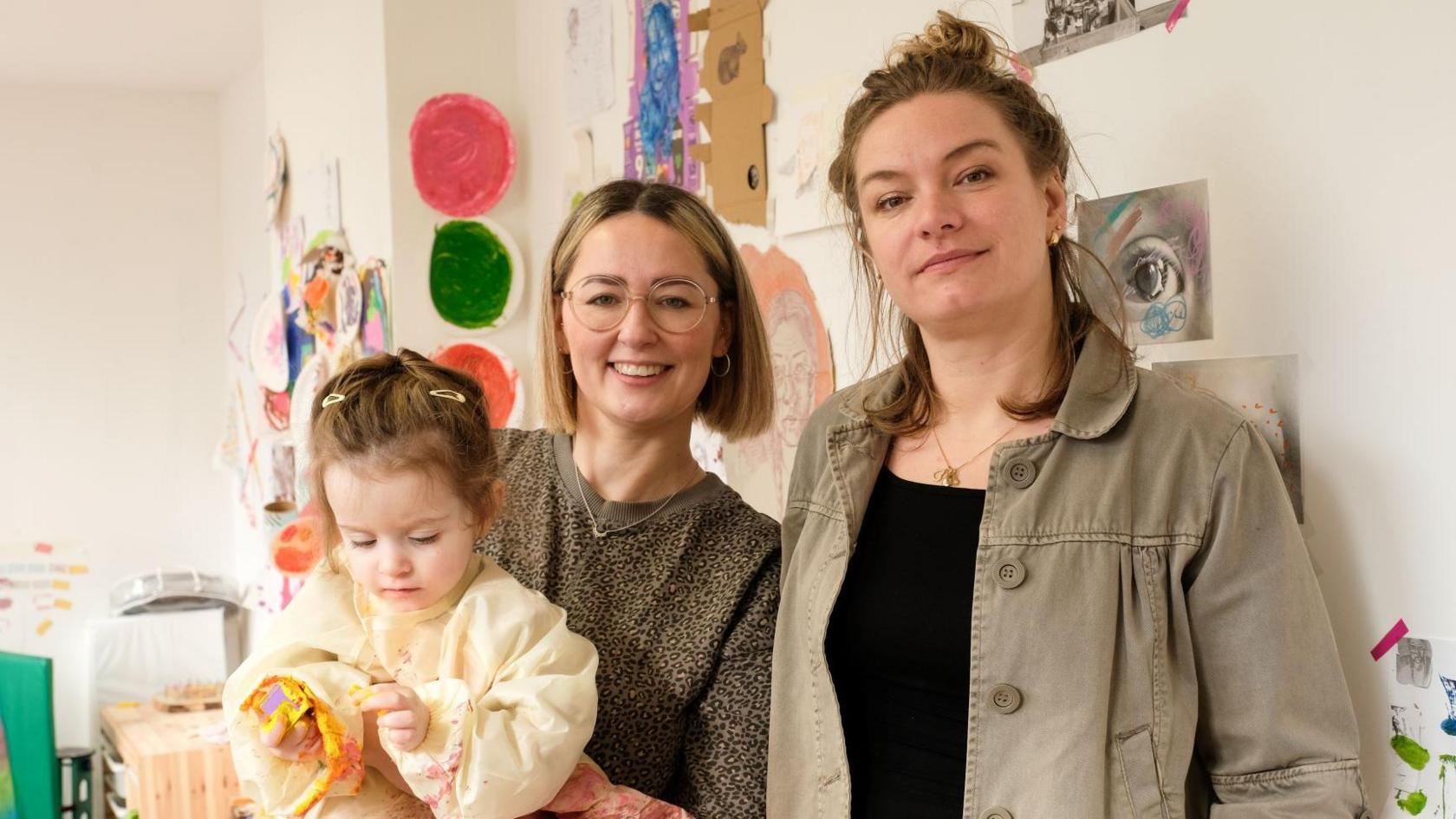
-
Published
When Anna Domejko had her twins five years ago, her career as an artist slowly came to a halt.
Ms Domejko could afford childcare for the hours she spent working at a gallery in Birmingham, but not for the hours she needed to make her own art, and going to networking evenings became almost impossible.
“I was trying to practise with the children [there]… but it was all happening at home, in the living room, in the kitchen,” she said. “I stopped making my own art entirely.”
With fellow artist Karolina Korupczynska, she is now using her experiences to support other artist-mothers by running a studio with on-site childcare.
The two women, who are co-directors of a gallery and studios called Stryx in Birmingham’s Jewellery Quarter, have just completed a pilot of their Mothership Residency scheme, and they will launch an exhibition of the artists’ work on 11 February. Stryx also has a site in Digbeth.
Ms Domejko said they wanted to show it was “absolutely possible” for women with very young children to continue their art careers, if they had the right support.
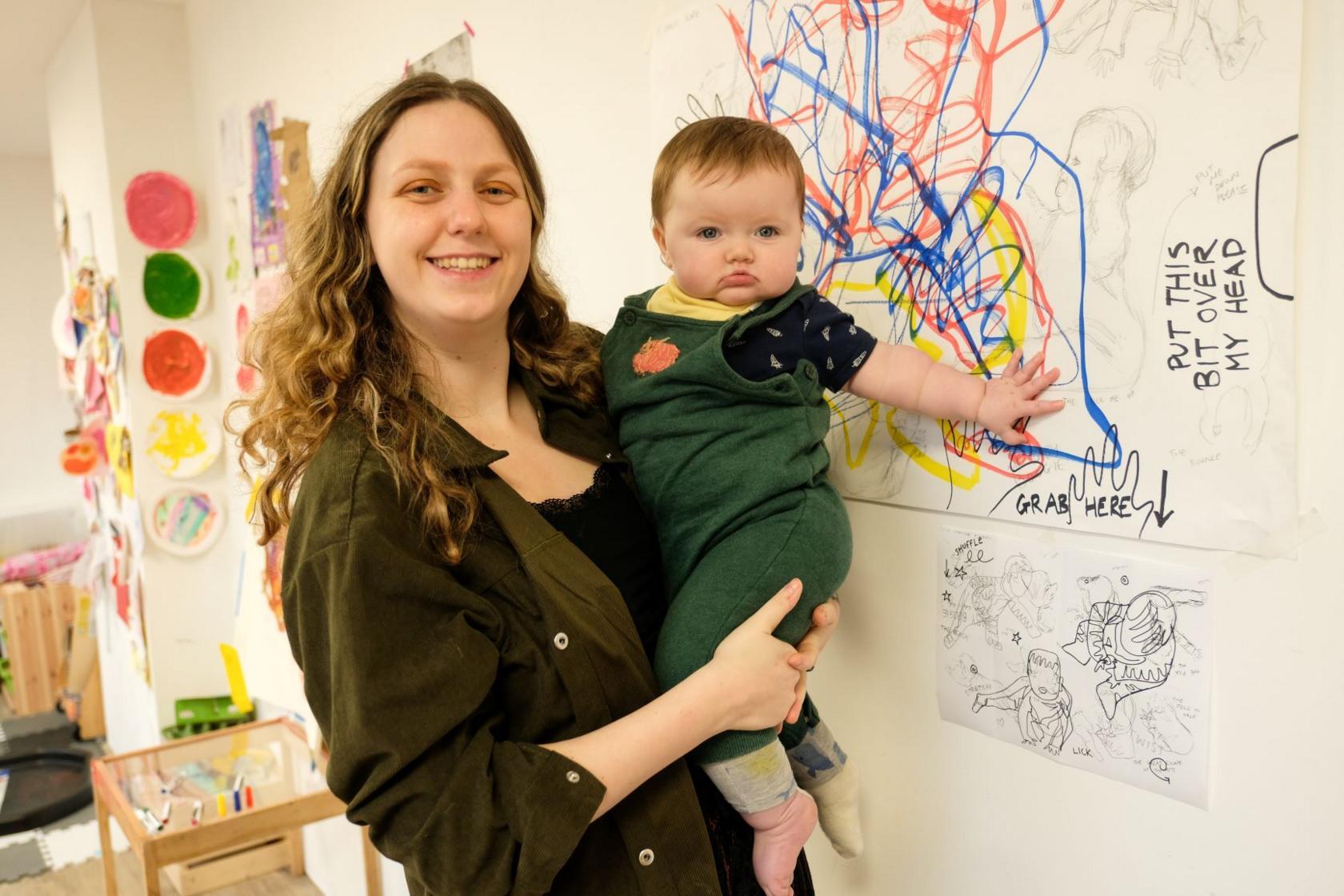



“It’s just been an absolute game changer,” said Isabella Dogliano, an artist who has taken part in the 16-week pilot residency along with her nine-month-old daughter.
“It’s really given me the chance to reconnect with my studio [work], as well as share a space with other creative mums who’ve gone through this massive change in their life.”
Lucy Bowers, an artist and a single mother with a three-year-old son, said the scheme had revived her “zest” for making art, partly as she no longer had to try and do it alone at night after her child went to bed.
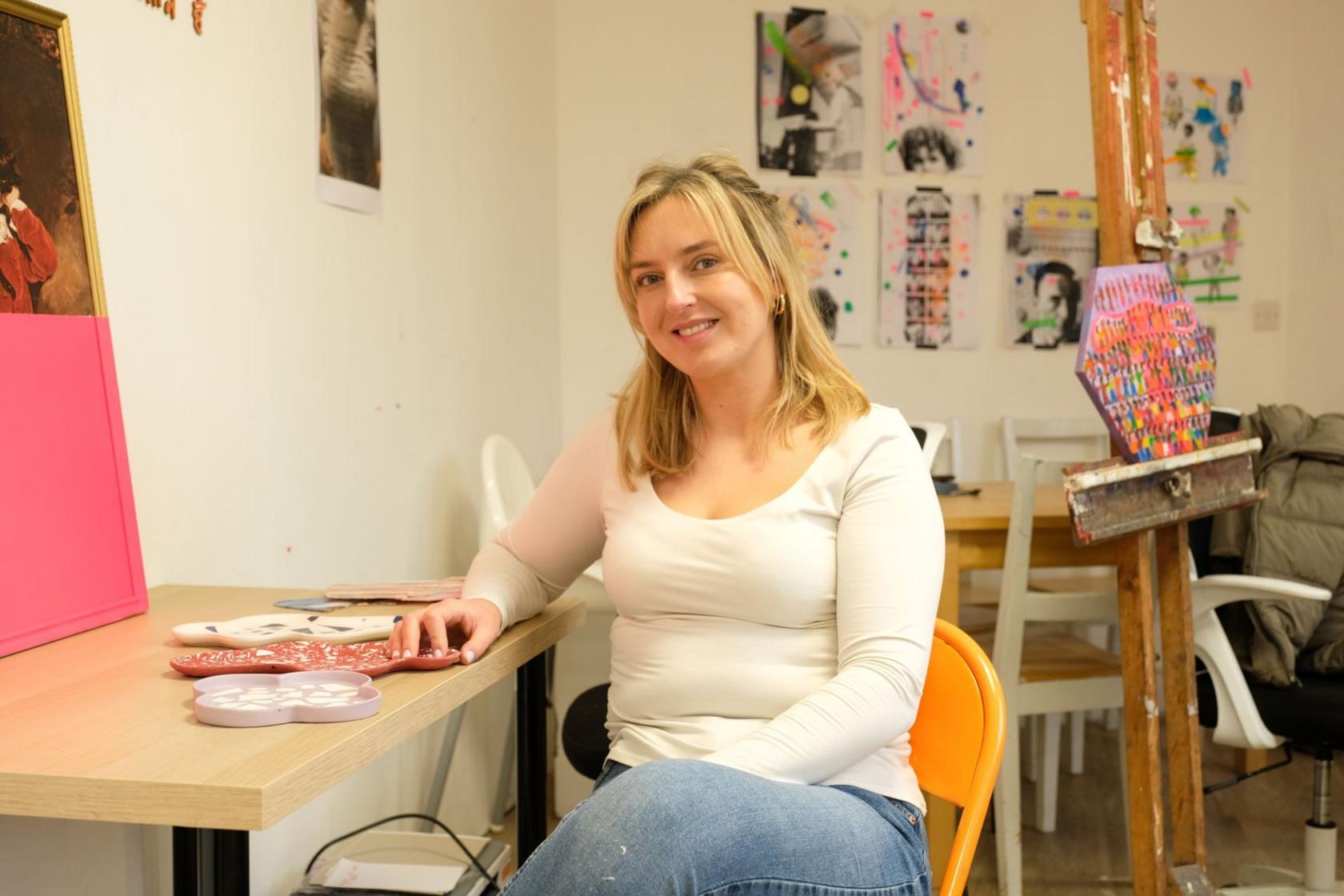



In the West Midlands, a full-time nursery place for a child aged 3-4 costs £107.64 per week on average, according to the latest annual survey by the charity Coram , externalpublished in March 2024. The average across England was £120.93 per week.
Costs for babies and toddlers were even higher, but these are falling as the government expands its childcare subsidies for working parents with three and four-year-olds to those with younger children. The staged expansion is due to finish in September.
Ms Korupczynska at Stryx said some artists did not earn enough to claim some of the new subsidies, which are mostly open to working parents earning between £9,518 and £100,000 per year., external
Childcare costs are “one of the biggest hurdles” for artist-mothers, said Hettie Judah, a curator and co-founder of the Art Working Parents Alliance, a national network with more than 500 members.
Ms Judah said artists already faced many costs in order to work, such as renting studios and buying materials, and they often had low and irregular incomes.
She added that artist-mothers often switched to working from home, which restricted the type of art they could make, or they became “invisible” and stopped producing art for years, making it hard for them to re-enter the art world once their children were older.
‘Exciting, special, wonderfully weird’
Stryx’s Mothership Residency scheme gave 12 artists a free studio space, a bursary, and on-site childcare staff who worked 10:00-14:00 GMT six days a week.
Following the pilot’s success, Stryx will offer a studio space with childcare support for £135-350 per month.
Stryx draws on a model known as “radical childcare”, by placing the mothers, children and playworkers in the same studio. The aim is to allow the mothers to flow between their roles as parents and artists.
Ms Dogliano said having her infant daughter in the studio had inspired her art, which includes sketches of her baby learning to move.
She added that, while the radical model meant some days were “crazier than others”, it also made the residency more creative and experimental.
“Sometimes it will [involve] lying on the floor breastfeeding while having a conversation… while another person is getting children to dance on clay. [It] is so exciting and special and wonderfully weird,” she said.
Ms Bowers said it had been positive for her son to see her working on her art and “see that I have an identity other than ‘mother'”.
‘We did this for our past selves’
A number of projects have been launched in recent years to address the barriers that artist-mothers face.
Mothers Who Make, an international network that provides peer support, has groups across the UK including in Birmingham and Coventry. Mother House Studios in London offers studios with childcare support.
A major national exhibition about motherhood, curated by Ms Judah and launched last year, has visited Birmingham during its UK tour.
Stryx’s exhibition, which runs until 19 April, will include installations, paintings, and clay work.
Ms Domejko and Ms Korupczynska, who takes her 18-month-old daughter to her gallery job twice a week, have planned for the show’s panel discussions and other events to happen during the day and work around children’s naptimes.
“I think we opened the Mothership studio for our past selves,” Ms Domejko said.
“If I had that opportunity when the kids were born… I think I would still be practicing as I was.”
Get in touch
Tell us which stories we should cover in Birmingham and the Black Country
Follow BBC Birmingham on BBC Sounds, Facebook, external, X, external and Instagram, external.
-
-
Published22 June 2024
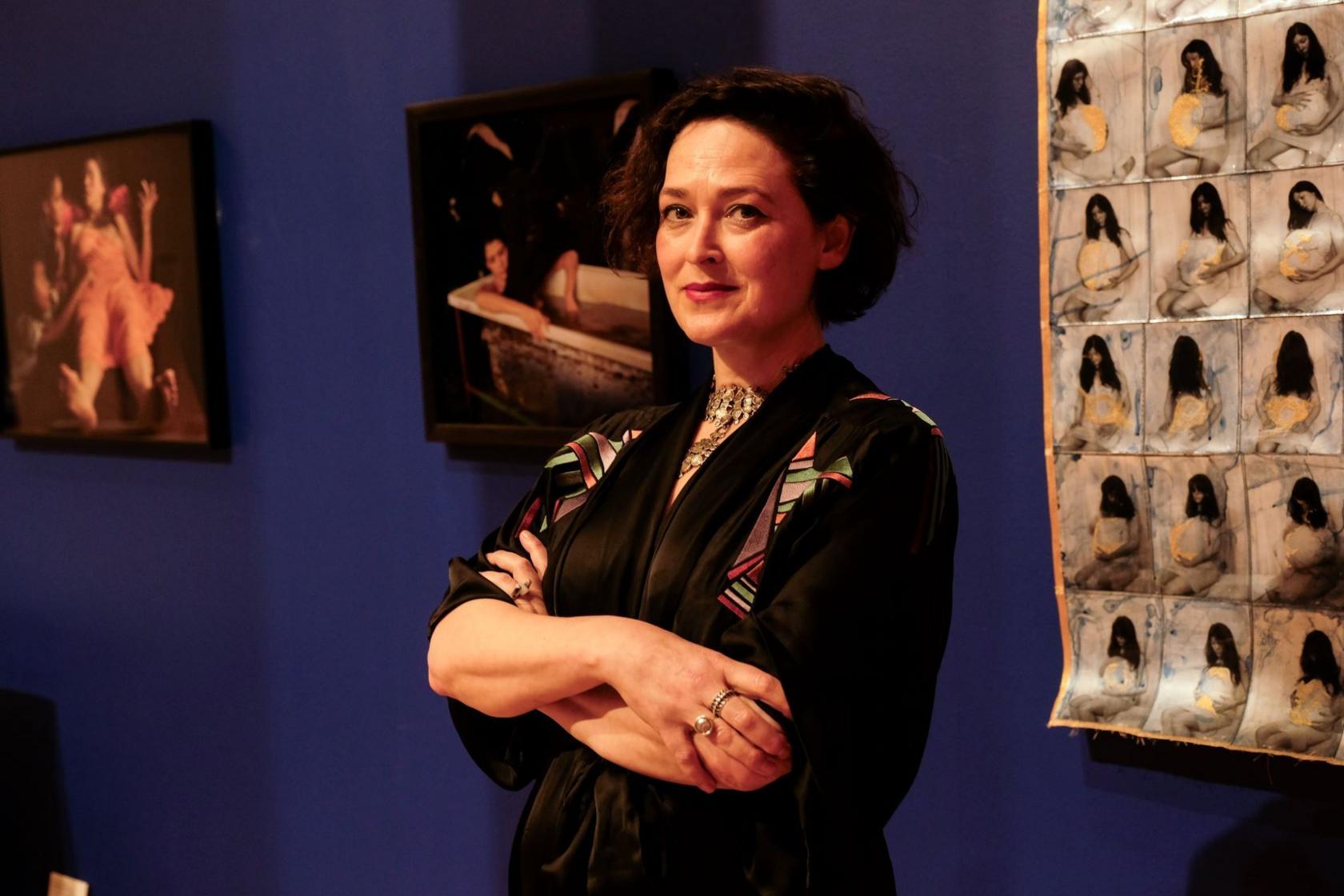



-
-
-
Published10 March 2024
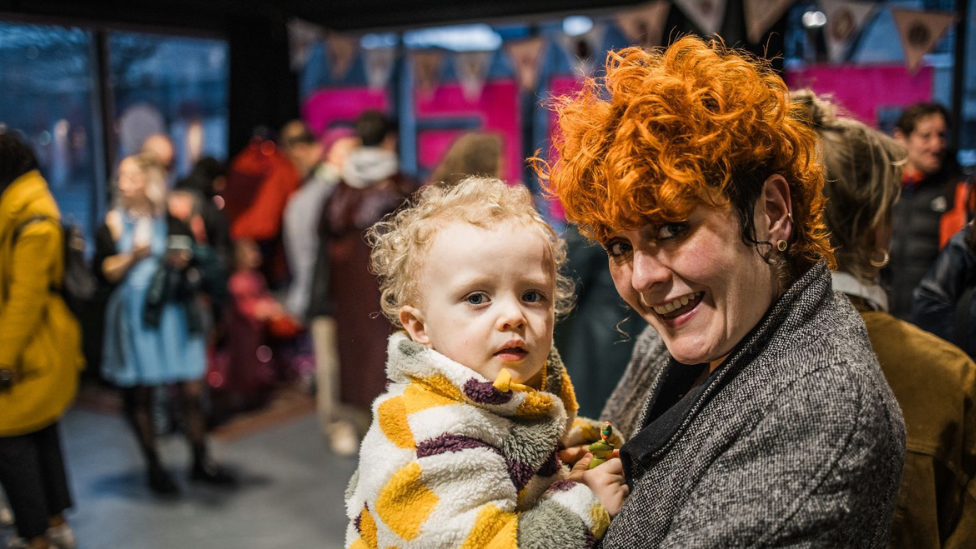



-
-
-
Published18 July 2024
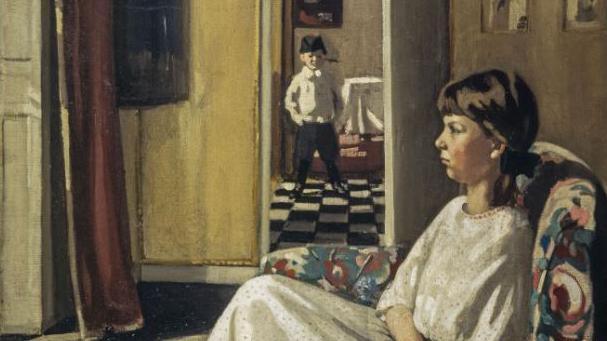



-
-
-
Published4 May 2022




-
Related internet links
This post was originally published on this site be sure to check out more of their content

